JH-HE3416B
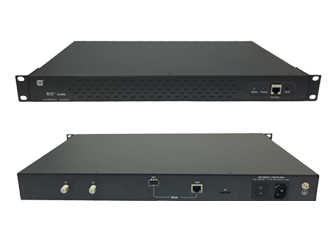
JH-HE3416B is a 19 inches, 1U rack- mount CMTS of D3-B family. It is designed for Headend access network, dedicated for indoor deployment. JH-HE3416B is a perfect CMTS for small to medium access network, providing the right solution for ISPs who have a lower number of clients. Benefitting from the new features of D3-B family such as high throughput, better QoS, JH-HE3416B can not only provide high bandwidth internet service, but also prefer solution for bandwidth and latency sensitive video services like IPTV and VOD.
JH-HE3416B is a highly cost effective, compact, easy to install and configure CMTS.
About D3 - B Series
D3-B family is the upgrade version of D3 family, running DOCSIS 3.0 and C-DOCSIS protocol. The D3-B family includes the following forms of CMTS: compact rack-mount type (1U), high-density type(3U), outdoor type and D-node type.
The benefits of D3-B family over D3 family are listed as follows:
◆ Upgrade from Dual core to Quad core processor for data forwarding;
◆ Upgrade from DDR2 to DDR3 RAM;
◆ Improved power management;
◆ Migrate to Linux operating system;
With these changes, the D3-B family provides faster forwarding capabilities and larger throughput for IP packet (especially smaller size packet or fragment packet are optimized).
All D3-B family products implement CMTS channel bonding technology, providing up to 16 QAM channels with total 1Gbps for DS (downstream), and up to 4 QPSK/QAM channels with total 160 Mbps for US (upstream). The DS can be easily configured to run as either data channel or IPQAM channel. It provides both electrical (RJ45) and optical (SFP, 1.25Gbps) connection for data forwarding. D3-B family also implements layer 3 routing function, QoS, DHCP/TFTP servers, and DHCP relay.
Users have 2 management methods, including CLI withTelnet and Web interface.
◆ Users can use CLI by login with Telnet (direct connection to the CMTS).
◆ Users can remote login to the CMTS embedded web interface through internet.
D3-B family is capable to run with DOCSIS 3.0/2.0 cable modems, set-top boxes (built-in with modems) and eMTA.
◆ Fully compatible with DOCSIS 3.0, C-DOCSIS, supports both EURO-DOCSIS and DOCSIS, works with DOCSIS cable modems.
◆ Users are free to configure the 16 DS channels bonding together, with 64/256/1024 QAM, with maximum 1.0Gbps @ 1024 QAM.
◆ Users are free to configure the 4 US channels bonding together, with QPSK/3~8 orders QAM, with maximum 160Mbps.
◆ Flexible channel bonding option.
◆ Supports maximum 500 cable modems online simultaneously.
◆ Supports layer 3 routing, static route, policy route, VLAN, L2VPN, ACL.
◆ Embedded DHCP/TFTP server, supports DHCP relay, CPE subnet arrangement. Supports Option 82, Option 60.
◆ Network interface has optical port (SFP) and RJ45 port.
◆ Load balancing mechanic for both DS and US, based on the number of clients (static) or data flow (dynamic).
◆ Supports IPv6, multicast, remote-query, Flap (DOCSIS signal quality jitter diagnosis), etc.
◆ Uses US and DS service flow classifier, QoS based on service flow ensures bandwidth and latency needs for various services.
◆ Secures network transmit via BPI+, CM identification, anti-DOS attack, user isolation and IP source checking.
◆ Supports US channel spectrum parameter analysis on web management.
◆ Two management methods, including CLI with Telnet and Web interface.
◆Automatically updates configuration file, easy for massive deployment.
◆Deploy in Headend
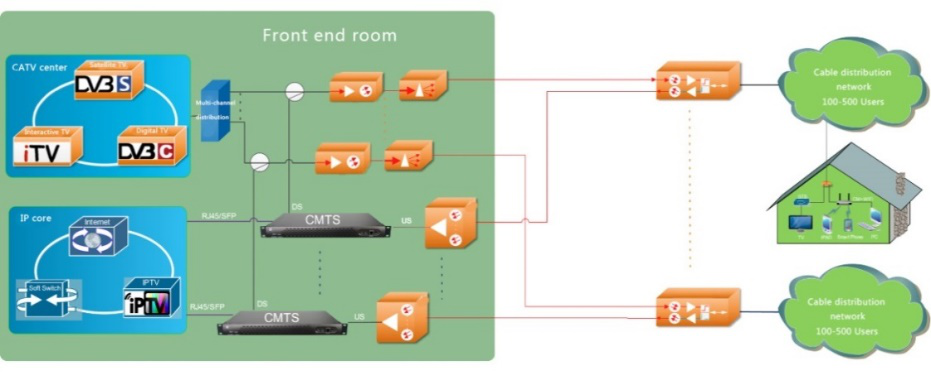
1. Each optic transmitter will connects to only one JH-HE3416B, in order to implement down-stream channel frequency reuse
2. Usually one JH-HE3416B can handle 1000 to 2000 clients.
3. Use multiple JH-HE3416B to increase the bandwidth
◆Deploy in headend when there are not enough fiber in return path
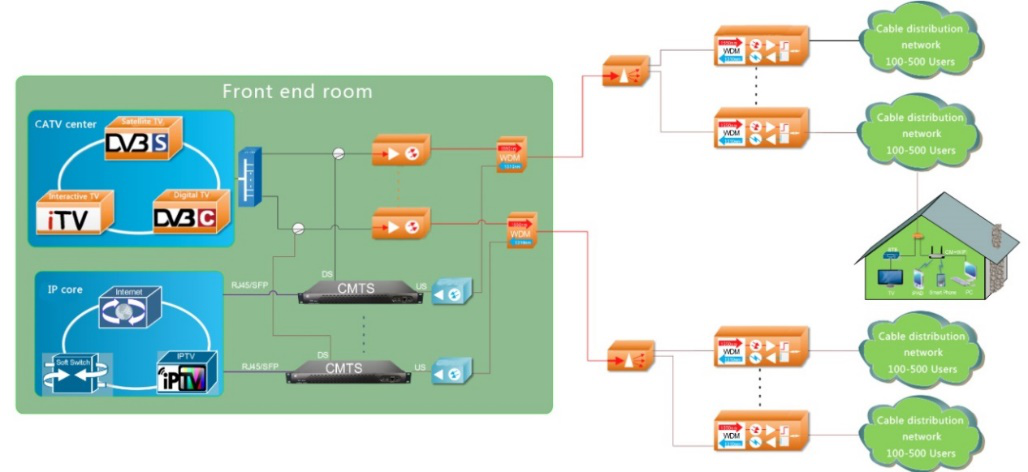
1. This topology is aim to provide solution for 1550nm optical network that lacks fibers at the optical node.
2. Thanks to the RFoG optical node, 1 fiber can handle both DS and US data transmission
3. Greatly reduce the problem caused by noise-funneling effect
4. Converge the US channel to 1 physical port, minimize the complexity of physical cables/wires
◆Deploy in Sub Headend
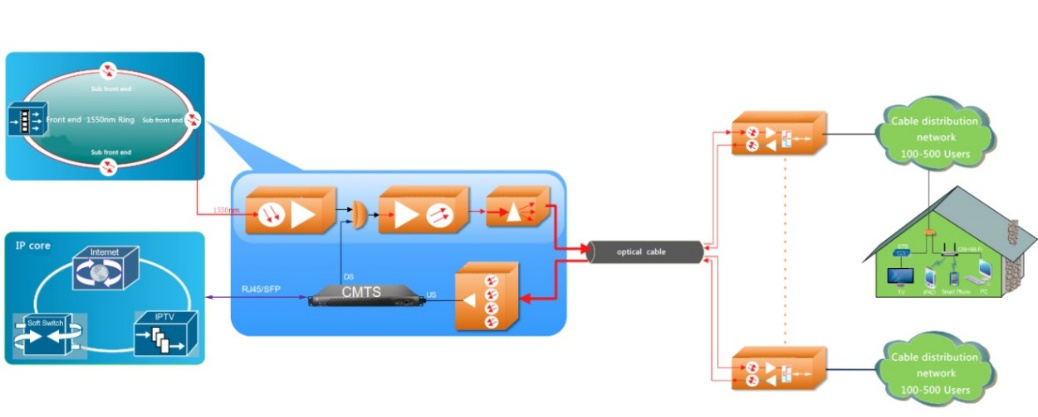
1. This topology is good for the HFC system which contains two level optical transmitters
2. Different headend can do frequency reuse for DS
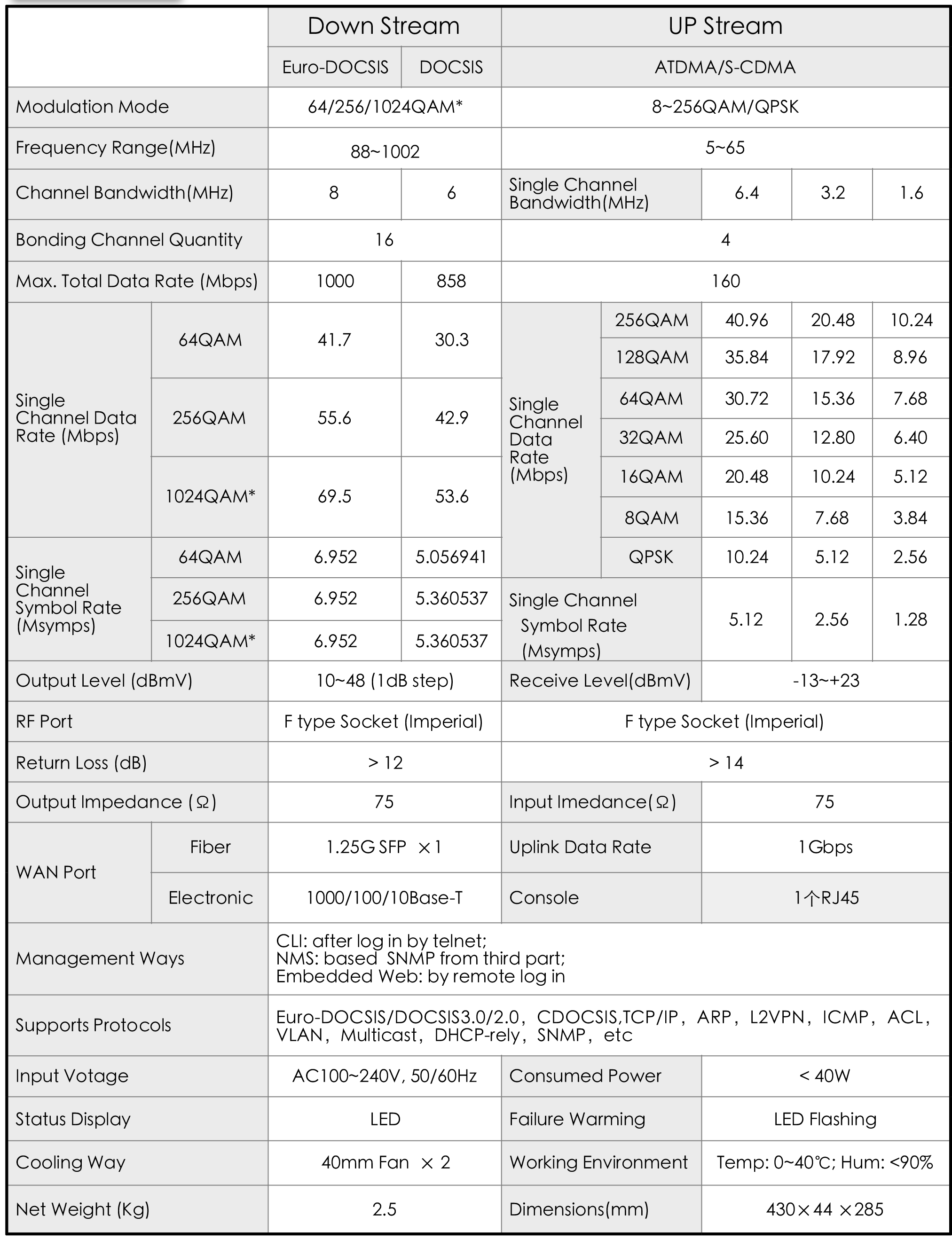
*Requset CM support 1024QAM
*Jinghong reserves the final explanations rights






